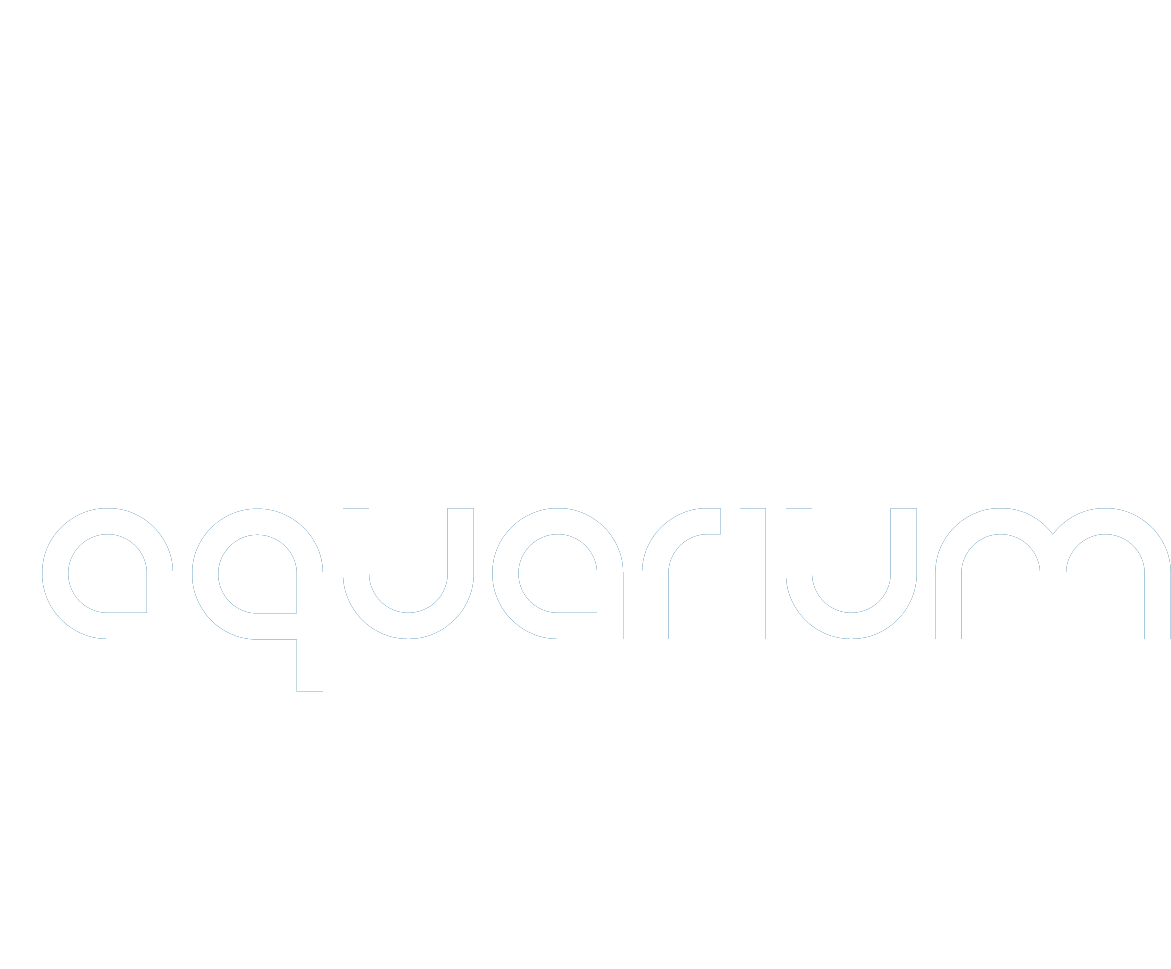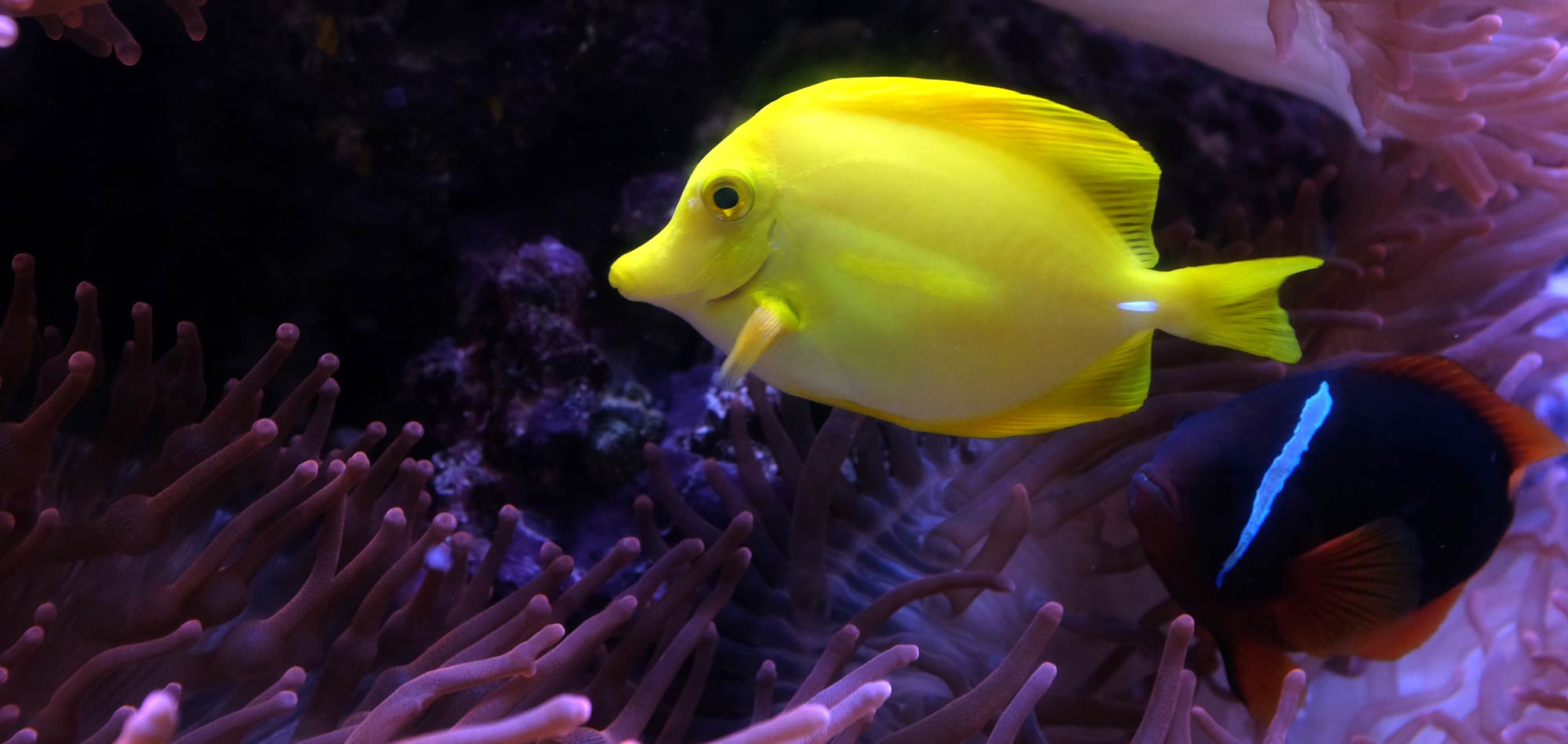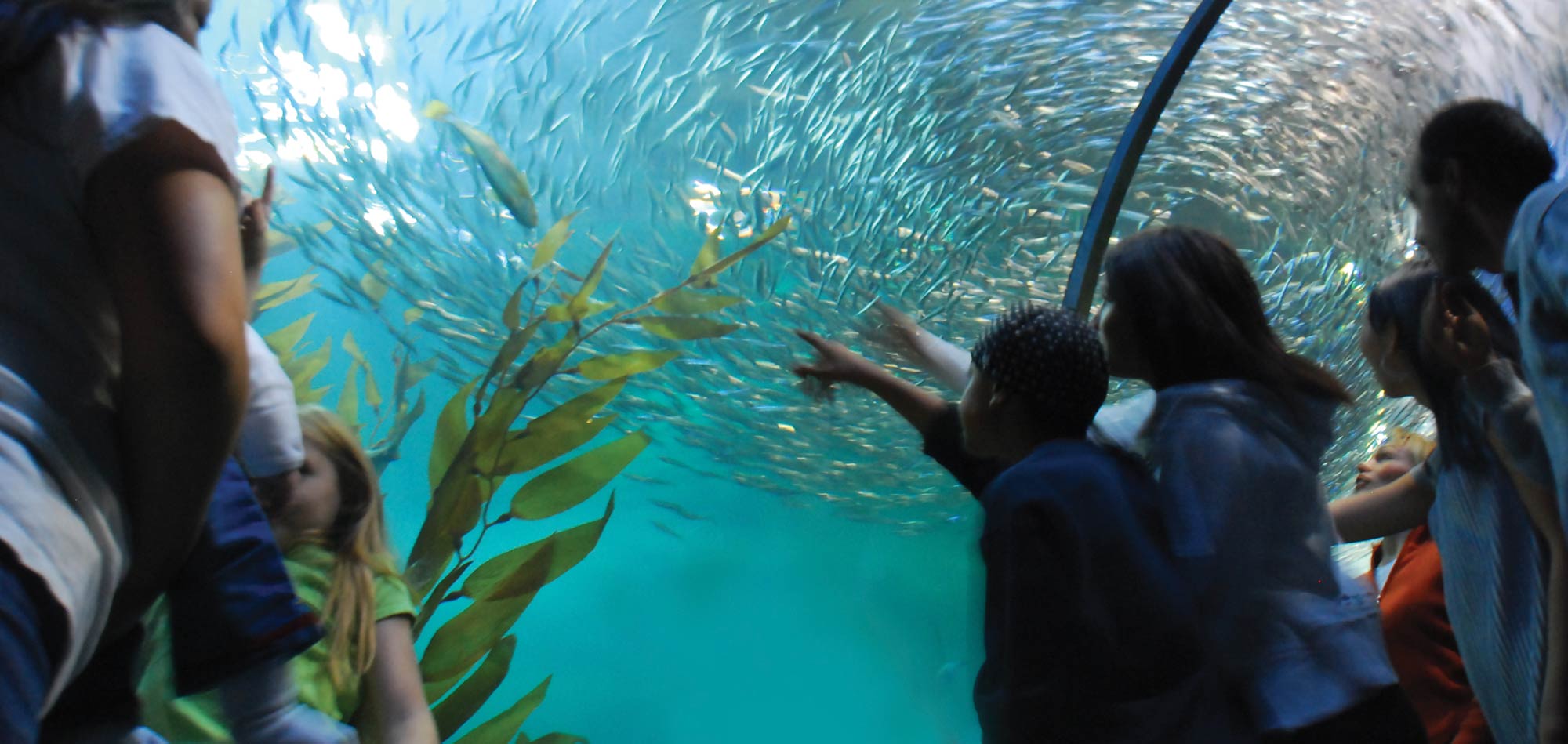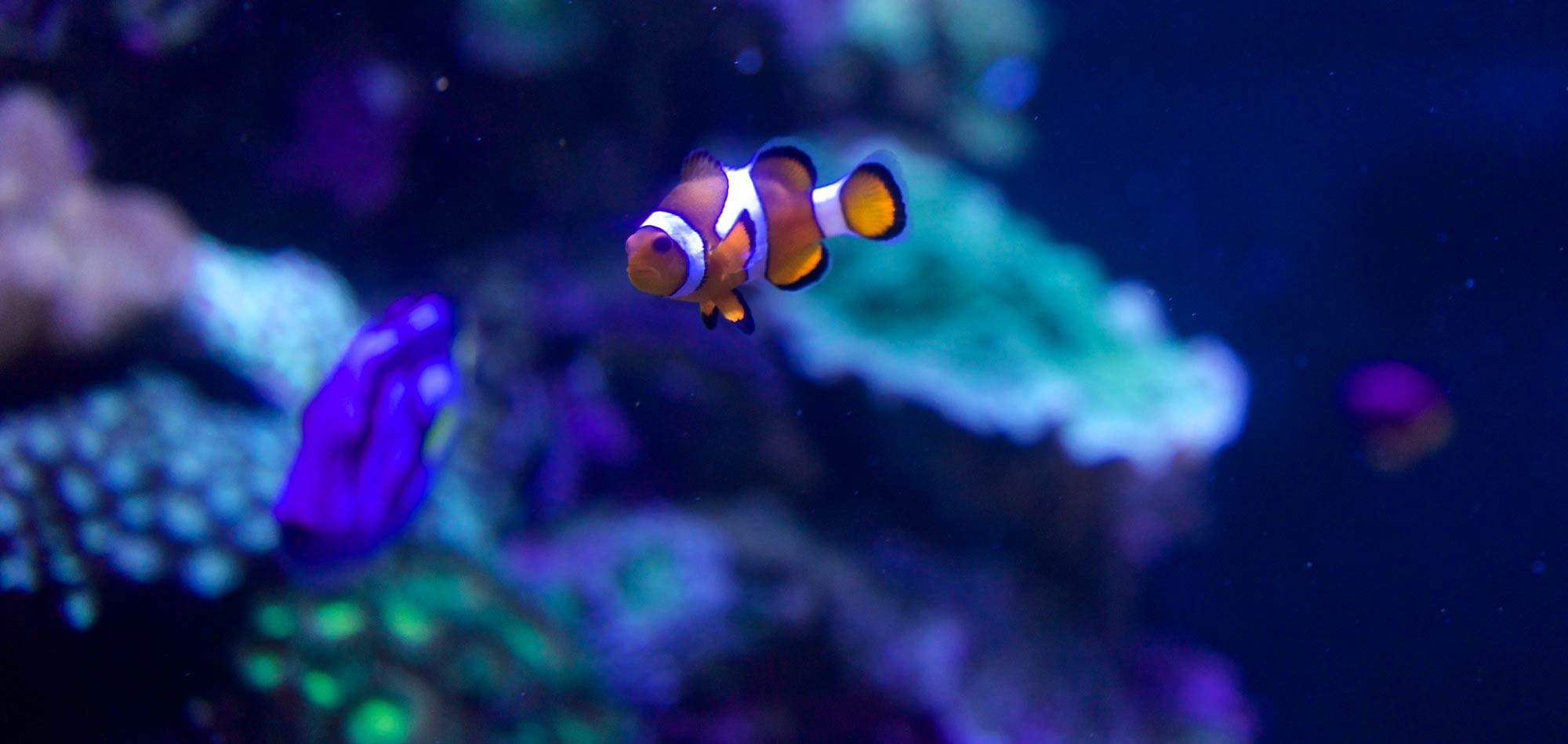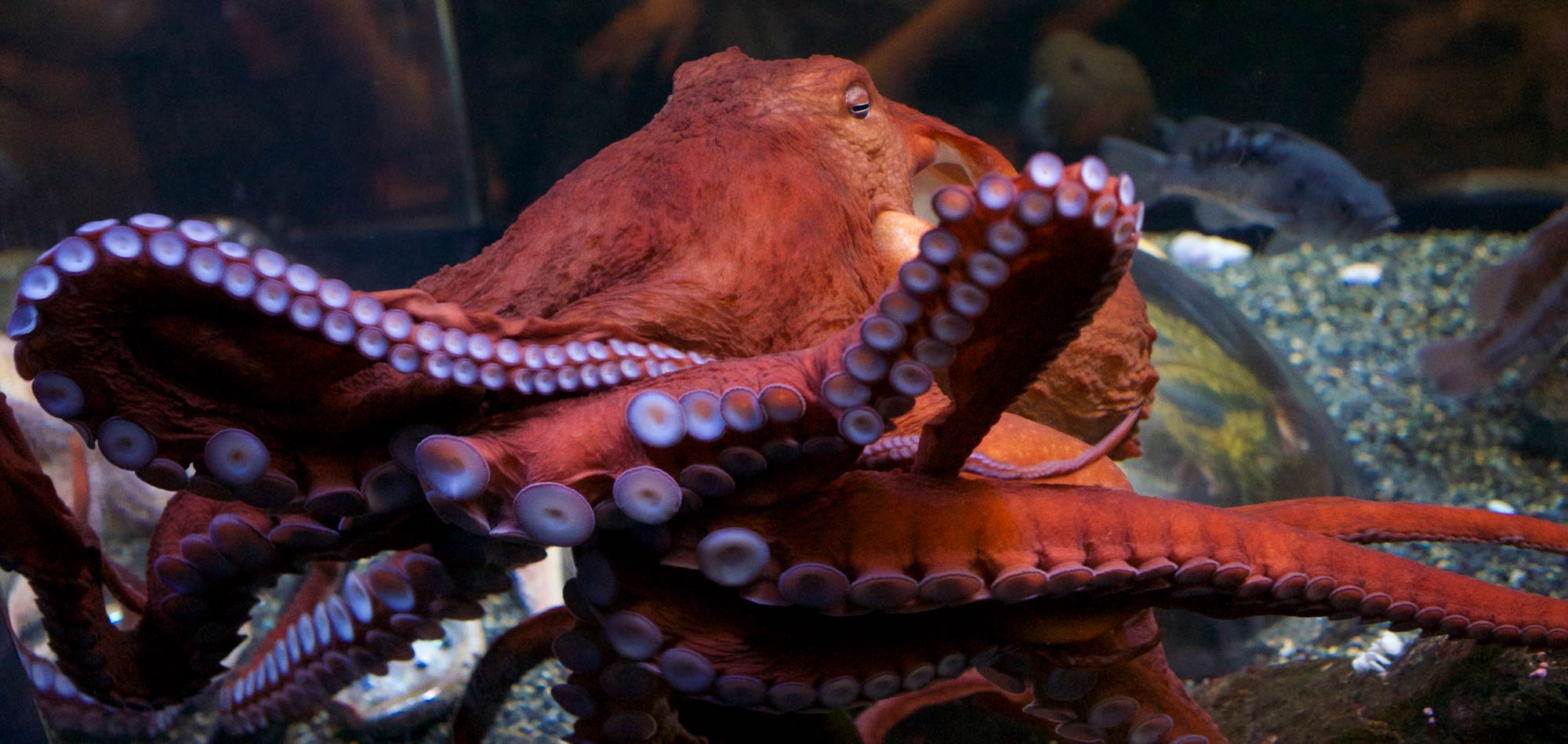Teacher Resources
Do you want teacher resources to bring San Francisco Bay and surrounding ecosystems into your classroom? Look no further than these resources Aquarium of the Bay created for you and your students. Each guide contains multiple thematic lesson plans and is aligned to the Next Generation Science Standards and the Common Core State Standards.
Kindergarten
Animals are adapted to and depend on their habitats. People can help take care of wildlife by taking care of habitats. Explore these ideas through science and STEAM activities. There are four lessons in this NGSS-aligned Teacher Resource Guide which can either be taught individually or as a unit.
Kindergarten Lessons + PDF Guide
- Lesson 1: What Is a Habitat?
Students explore different types of habitats, including forest, desert, and ocean. - Lesson 2: What Is a Shark?
Students discover that sharks are fish with unique adaptations that help them survive in their ocean habitats. - Lesson 3: Six Senses of a Shark
Students explore the six senses of sharks through participating in center activities. - Lesson 4: Where Does Trash Go?
Students discover how people can protect animals and their habitats by responsibly sorting and disposing of trash.
First Grade
River otters are among the many amazing animals that share California with us. Using science and STEAM activities, explore the ways people can have a positive or negative impact on river otters and our other animal neighbors. There are four lessons in this NGSS-aligned Teacher Resource Guide which can either be taught individually or as a unit.
First Grade Lessons + PDF Guide
- Lesson 1: Living Things: River Otters
Students explore the characteristics of living things and river otter adaptations through drawing and reading informational text. - Lesson 2: Effects of Pollution
Students investigate the causes and impacts of pollution in rivers through experimentation. - Lesson 3: Letters from an Otter
Students explore the impacts of pollution on wildlife by writing letters from an otter’s point of view. - Lesson 4: Reusing Recycled Material
Students explore the idea of reducing, reusing, and recycling by creating a craft from reused materials.
Second Grade
Many different kinds of animals depend on clean freshwater habitats throughout their life cycles. Explore the ideas of animal life cycles and environmental stewardship by investigating the natural history and ecology of frogs, salmon, and dragonflies. There are four lessons in this NGSS-aligned Teacher Resource Guide which can either be taught individually or as a unit.
Second Grade Lessons + PDF Guide
- Lesson 1: Life Cycle Art
Students explore the frog life cycle by reading informational text and creating an artistic representation of the frog life cycle. - Lesson 2: Freshwater Life Cycles
Students explore the life cycles of frogs, salmon, and dragonflies. - Lesson 3: My Life as a Frog
Students investigate the ecological interactions of and environmental impacts on frogs at each life cycle stage through an activity that models the frog life cycle. - Lesson 4: If the Water is Clear
Students write creative writing pieces to describe the importance of taking care of freshwater habitats for both animals and people.
Third Grade
Salmon are extraordinary animals that both depend on and help create healthy freshwater ecosystems. Discover the biology and ecology of salmon, one of California’s iconic keystone species, through interdisciplinary science learning. There are four lessons in this NGSS-aligned Teacher Resource Guide which can either be taught individually or as a unit.
Third Grade Lessons + PDF Guide
- Lesson 1: Coming Home
Students explore salmon’s upstream migration and nest-building adaptations through building model salmon nests, or redds, and reading informational text. - Lesson 2: Salmon and Beavers
Students explore the symbiotic ecological relationship between salmon and beavers by designing, building, and testing model beaver dams and reading informational text. - Lesson 3: Salmon Country
Students explore the relationship between salmon and California First Nations by researching, writing, and editing a synthesis. - Lesson 4: Like Water for Salmon
Students explore the idea of dietary water footprints, keep a food journal, and consider the impact of food choices on salmon and freshwater ecosystems.
Fourth Grade
Food webs are complex systems that consist of many organisms depending on each other for nutrients and are affected by a variety of human and natural factors. Explore Bay Area and California food webs through a variety of STEM activities. There are four lessons in this NGSS-aligned Teacher Resource Guide which can either be taught individually or as a unit.
Fourth Grade Lessons + PDF Guide
- Lesson 1: What Is a Food Web?
Students explore the concept of food webs by constructing a model of San Francisco Bay’s food web. - Lesson 2: Endangered Animal Scenario Timelines
Students explore how natural and human-caused changes to the food web impact endangered species over time. - Lesson 3: Who Lives in My Backyard?
Students will investigate local food webs through outdoor observation, data collection, and group discussion. - Lesson 4: Food Web Trivia
Students demonstrate understanding of food web concepts through a class trivia game.
Fifth Grade
Seaweeds and submerged plants share some characteristics with terrestrial plants but are specially adapted to the marine environment and provide essential habitat and food within marine ecosystems. Discover how these amazing organisms are a part of everyday life and of the ecology of San Francisco Bay. There are four lessons in this NGSS-aligned Teacher Resource Guide which can either be taught individually or as a unit.
Fifth Grade Lessons + PDF Guide
- Lesson 1: Seaweeds and Trees
Students explore the similarities and differences between seaweeds and trees. - Lesson 2: Seaweed Discovery Lab
Students investigate seaweeds and the role they play in everyday life in this hands-on lab. - Lesson 3: Disappearing Eelgrass Communities
Students explore the ecology of San Francisco Bay eelgrass communities by modelling these ecosystems and collecting data. - Lesson 4: Why Protect Eelgrass Communities in San Francisco Bay?
Students build a persuasive argument based on evidence to support the protection of eelgrass ecosystems in San Francisco Bay.
Sixth Grade
The San Francisco Bay is an important part of a watershed where rivers and other freshwater sources flow and shape the land on their way to the ocean. Explore watershed dynamics and the ways humans interact with and depend on the San Francisco Bay’s watershed. There are four lessons in this NGSS-aligned Teacher Resource Guide which can either be taught individually or as a unit.
Sixth Grade Lessons + PDF Guide
- Lesson 1: Shaping Our Land
Students investigate watershed functions and dynamics by constructing a watershed model and researching rivers. - Lesson 2: A Wonderful Watershed
Students investigate the San Francisco Bay’s watershed through modelling and reading informational text. - Lesson 3: Humans and the Watershed
Students explore the human relationship with San Francisco Bay’s watershed, focusing on freshwater diversions. - Lesson 4: Human Impact Analysis
Students explore the impact of water diversions on San Francisco Bay’s watershed by analyzing real freshwater flow data provided by The Bay Institute.
Seventh Grade
California sea lions are an integral part of complex ecosystems and are impacted by human activities. Explore the biology and ecology of sea lions and discover ways humans can protect them and their pinneped relatives. There are four lessons in this NGSS-aligned Teacher Resource Guide which can either be taught individually or as a unit.
Seventh Grade Lessons + PDF Guide
- Lesson 1: Family Matters
Students explore the classification of sea lions and other pinnepeds by creating a classification chart of phocids, otariids, and odobenids. - Lesson 2: The Food Web Game
Students investigate the California sea lion ecology by modelling the food web and exploring the ecological relationships therein. - Lesson 3: Sea Lion Inquiry
Students investigate local sea lion populations by gathering, analyzing, and sharing data. - Lesson 4: Ban the Bag
Students explore ways communities can protect sea lions and other marine life by limiting or eliminating single-use plastics.
Eighth Grade
Temperature, salinity, and density are three dynamic, interconnected, and important characteristics of water. Explore these characteristics and the ways in which climate change is impacting them in the global ocean through hands-on experimentation and interdisciplinary learning. There are four lessons in this NGSS-aligned Teacher Resource Guide which can either be taught individually or as a unit.
Eighth Grade Lessons + PDF Guide
- Lesson 1: Temperature and Salinity Investigation
Students explore the connections between temperature, salinity, and density through an investigation layering different types of water. - Lesson 2: Temperature, Salinity, and Density 101
Students explore the mathematical connection among water’s temperature, salinity, and density by interpreting graphs, completing calculations, and supporting claims with evidence. - Lesson 3: Forming and Melting Ice
Students explore how water’s salinity changes during phase change and the impacts of climate change on land and sea ice through two hands-on investigations and discussion. - Lesson 4: Climate Change and the Global Conveyor Belt
Students explore how the climate-change-driven melting of land and sea ice impacts the global thermohaline conveyor belt through informational reading and composition. Students consider how humans can have both positive and negative impacts on the global environment.’
High School Biology
Explore marine ecology concepts and human impacts on marine systems using Bay Area ecosystems and organisms as case studies. There are four lessons in this NGSS-aligned Teacher Resource Guide which can either be taught individually or as a unit
High School Biology Lessons + PDF Guide
- Lesson 1: Interdependence in the Farallones
Students investigate interdependent relationships in ecosystems using the Farallon Islands as a case study. Students construct a food web diagram using resources provided and explore relationships in the Farallon Island food web. - Lesson 2: Human Impact and Sustainable Seafood
Students investigate the role that humans play in maintaining or disrupting ecosystem functions by exploring positive and negative impacts that different fishing methods have on marine ecosystems. - Lesson 3: Marine Protected Areas
Students investigate the important role that marine protected areas can play in preserving marine ecosystems through content reading, activities, and critical thinking. - Lesson 4: Protecting the Great White Shark
Students investigate the important ecological role great white sharks fill on the California coast by creating a proposal for protecting great white sharks.
High School Chemistry
The chemistry of our ocean is changing due to the influx of carbon dioxide pollution. Explore the chemistry of ocean acidification and the impact climate change has on marine wildlife. There are four lessons in this NGSS-aligned Teacher Resource Guide which can either be taught individually or as a unit.
High School Chemistry Lessons + PDF Guide
- Lesson 1: Acids, Bases, and Our Oceans
Students investigate how the pH of seawater is changing due to climate change through experimentation and balancing chemical equations. - Lesson 2: The Chemistry of Ocean Acidification
Students investigate the chemistry of ocean acidification through classroom discussion and exploring the chemical reactions involved in the acidification process. - Lesson 3: Oceans Absorbing Our Carbon
Students investigate the sources and impacts of carbon pollution in marine ecosystems by calculating their carbon footprints and observing the effects of dry ice on water. - Lesson 4: Calcification in a Changing Ocean
Students investigate how ocean acidification impacts marine organisms’ ability to build calcium carbonate structures through modelling and experimentation.
Discover the Bay Hybrid Ferry
This Teacher Resource Guide complements Aquarium of the Bay and Alcatraz Cruises’ Discover the Bay Hybrid Ferry Program and is designed for upper elementary and middle school students. There are five lessons in this NGSS-aligned Teacher Resource Guide each of which supplements a station on the Hybrid Ferry. These lessons can either be taught individually or as a unit.
Discover the Bay Hybrid Ferry Lessons + PDF Guide
- Lesson 1: Hybrid and Alternative Energy Sources
Students investigate the impacts of climate change and solutions that protect our climate through experimentation and discussion. - Lesson 2: All about Plankton
Students explore plankton adaptations through an interdisciplinary STEM design activity. - Lesson 3: Water, Water Everywhere
Students investigate the relationship between water density and salinity by completing two experiments. - Lesson 4: Our Waters and Us
Students explore watershed dynamics by constructing and experimenting with simple watershed models. - Lesson 5: Observation
Students practice their scientific observation skills by observing everyday objects.
Marine Debris Prevention
This Teacher Resource Guide is designed to educate students about the impacts of marine debris, also known as marine litter, and to inspire them to take care of our oceans. This guide is designed for upper elementary school students, but some activities may also be applicable or adaptable for other grades. There are four lessons in this Teacher Resource Guide which can either be taught individually or as a unit.
Marine Debris Prevention Lessons + PDF Guide
- Lesson 1: Trash Timeline
Students build a decomposition timeline for different types of trash. - Lesson 2: Do Science: Data Collection
Students participate in a schoolyard or park cleanup and collect data on the types of trash collected. - Lesson 3: The Story of Trash
Students consider where marine debris comes from by following the story of a piece of trash from creation to disposal. - Lesson 4: Reduce, Reuse, Recycle
Students explore different ways to prevent marine debris.
